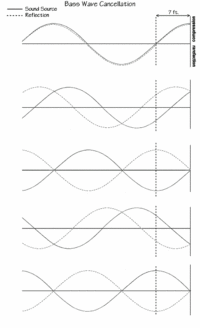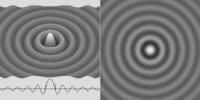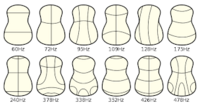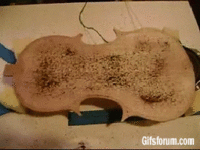Chladni Plates
[Claimed by Tristan Gaskins] Chladni Plates are a method of predicting nodes (otherwise known as points of no amplitude) within sound waves. The plates are generally metallic to produce the greatest vibration and some material, generally sand, is applied to visualize these node spots. When producing multiple frequencies, these plates can create majestic visualizations.
The Main Idea
Chladni Plates are an interesting way to visualize and predict sound waves in physical media.

Determining the Distance Between Nodes
Speed of Sound: Varies between solids depending on temperature, density, and atomic structure.

Graphically, sine waves can be used to visualize the intensity of vibrations, with the waves reflecting back towards the center when reaching the edge of the plate.
After the speed of sound of the chosen medium is determined, the formula d=v*t can be used to determine the placement of nodes.

Examples
Although there is little practical application of the plates today aside from use as learning tools, here are some cool applications and examples of their different configurations.

Connectedness
Chladni plates react similarly to instruments in that the instruments are going to vibrate in a specific way in correlation to various frequencies of sound. I tend to be interested in music, so it provides a greater understanding about the production of the sounds. My major is Mechanical Engineering, and vibration is important to consider when designing any mechanism. Without accounting for vibration points, brittle pieces may break and joints will begin to loosen. Industrial applications are generally centered around the identification of the speed of sound through solids and gases and the effect of the medium on transmission and the effect of the transmission on the medium.
History
Right Ernst Chladni was a German physicist of the 18th and 19th centuries. Although the general idea was discovered in 1680 by John Hooke, Chladni was able to perfect the process of distinguishing the nodal points of various materials at resonant frequencies to better manufacture instruments and perect his art. Furthermore, he later applied the same techniques to gasses to determine the speed of sound within them through watching their nodal points when dust or other light particles were suspended.
See also
Wavelength: General property of sound Motional Emf using Faraday's Law: Faraday waves tend to share similar properties Resonance: Resonant frequencies are the only instances of nodal points within materials
Further reading
'Chladni Plate': http://makezine.com/projects/chladni-plate/
